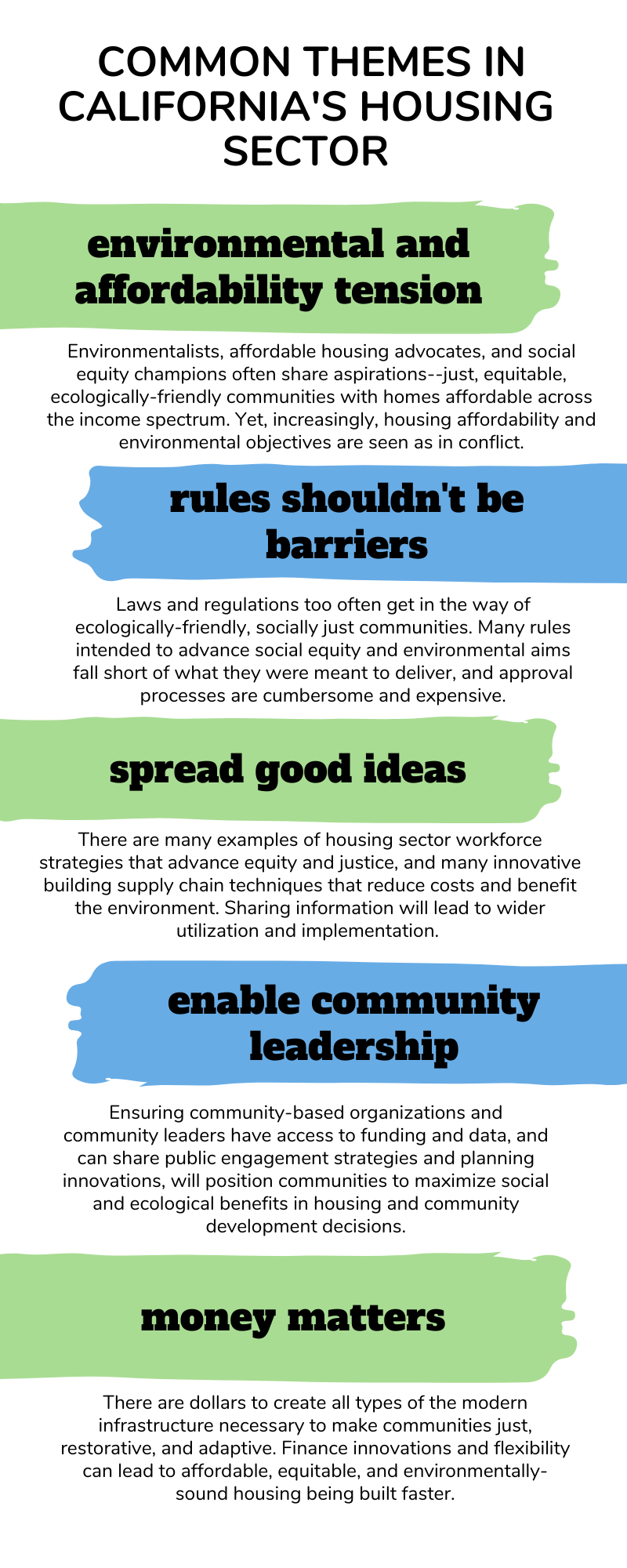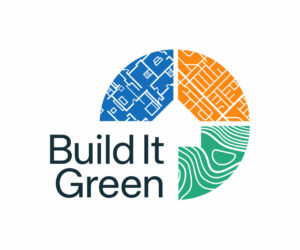What happens when a wide range of players tackling California’s housing opportunities and challenges come together? In December 2021, Build It Green (BIG) set out to find out. We hosted two virtual meetings with nearly 100 people from across the housing ecosystem: contractors and builders, government officials, community organizers, advocates, urban planners, building science innovators, and more. Read on to find out more and how to participate in the next steps.
For decades now, housing affordability has been a crisis in California. In this same period, the often negative impacts of housing decisions and practices on the climate, the broader environment, and communities made up primarily of people who have been historically marginalized, be it due to racial discrimination or economic status, has been profound. Hundreds, if not thousands, of companies, organizations, and government agencies have worked tirelessly to address the intertwined issues within the state’s housing ecosystem. But, even with great work from all of these players, progress has been marginal at best.
Why? Because the work has often been siloed and focused on addressing just a small portion of the affordability, social equity, and environmental challenges that exist within the overall housing ecosystem. At BIG, we wonder if creating a space for those interested in stepping outside of their siloes to address California’s housing issues holistically might lead to integrated approaches that result in environmental, social equity, AND affordability benefits. Building Our Future was our first attempt at establishing such a venue for systemic thinking and idea generation.

Participants were encouraged to not let the themes limit the dialogue. As a result, the dialogue richly evolved and ideas began to intersect across the breakout groups.
The range of the discussions was truly diverse. Some of the conversations focused on specific environmentally-oriented solutions, such as heat pump hot water heaters, while others went deep on community engagement practices and building community trust. Other conversations were more conceptual, tackling issues like the economics of housing and the need for policy reform to allow for rapid adoption of innovation in sustainable building, and increasing the volume of housing construction. Still others discussed the need for regional collaboration and the importance of just workforce development. Through all the excitement and energy, one thing was clear—no topic discussed was “the solution” to California’s housing conundrum. Every topic is a piece of a mosaic that must be looked at as a whole to be fully appreciated, understood, and effectively addressed.
The clear sentiment of those who participated in Building Our Future was to continue the collective dialogue and idea generation. Based on that interest, BIG is planning on launching a few working groups early in 2022 to help wrestle with some of the issues that came out of the December meetings. Some of these groups will likely quickly produce resources that others in the housing ecosystem can use, while other groups will focus on defining issues that will be tackled over a longer period of time. In the spirit of Building Our Future, Build It Green will ensure that each working group brings together a broad set of participants so that the ideas that emerge have the potential to be different, holistic, and, just maybe, transformative to California’s housing ecosystem.
In addition to the working groups, we expect to deliver a handful of activities over the coming months so that players in the California housing ecosystem can learn from each other and start to see the intersections between various types of work.


Alex Coba
Communication Associate
As a proud California native from Stockton, Alex brings a wealth of experience and a versatile skill set. He has a solid communication background with a Bachelor of Arts in Journalism and Public Relations from California State University, Chico. Alex is adept at strategic communications and media relations, with experience gathering and sharing stories from his local communities that uplift the unique spirit and values of those places. He is excited to join Build It Green, where he can apply his talents to further BIG’s mission to help communities across California thrive